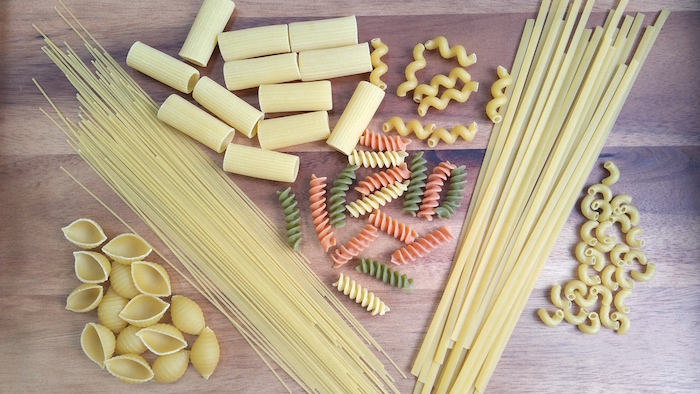 Three simple steps for cooking pasta properly and perfectly. It's not rocket science, but How To Cook Pasta properly can have a huge impact on your dish.
Three simple steps for cooking pasta properly and perfectly. It's not rocket science, but How To Cook Pasta properly can have a huge impact on your dish.
When cooking pasta for my family, I always hear how the pasta itself is perfectly cooked both in texture and taste. There is nothing worse than overcooked pasta and there isn't a sauce that exists that can fix it. Here are some simple steps on How To Cook Pasta properly.
When cooking pasta, 3 things are important. Having enough water to accommodate the pasta, salting the water, and cooking until "al dente".
First, have enough water in the pan to accommodate the amount of pasta you are cooking. The pasta needs enough water to prevent sticking to itself and enough room to move when boiling. When pasta is made - either fresh or dried - it is coated with starch. You need a good amount of boiling water to allow the pasta to separate and release the starches that are 'glued' to it. A good stirring in the beginning also ensures separation.
When cooking a pound of pasta use about 6 quarts of water - especially the long versions - spaghetti, linguini, fettuccine, etc. As for the ziti, shells, elbows, or the like, it may be a little less - say 4 quarts. After using the same pan once or twice, you will be able to eyeball it. Better to have more than less but you certainly don't need a large stockpot with 6 quarts of water to make a ½ pound of elbows.
Second, salting the water is very important. It adds flavor to the pasta. Without salting, it doesn't matter what sauce you top it with because it will lack in flavor. I have tested pasta cooked in unsalted water without telling my testers (family). They noticed it right away and were quick to tell me the dish lacked in flavor even though the same sauce was used with pasta cooked in salted water. The pasta cooked in salted water brought out the flavor of the sauce.
I have never measured the amount of salt I add to the water, but for this post, I wanted a sense of how much salt was a handful. I grabbed a handful of kosher salt and added it to my empty stockpot to get a sense. I repeated this 3 times and each time the result was the same - 2 tablespoons. I grinned at the result and was somewhat impressed with myself. It doesn't take much!
Third, I cook pasta "al dente". "Al dente" translates to "has a bite". When eating pasta, it should be slightly toothsome, having substance without being hard or crunchy. Recommended cooking time for al dente should be on the package of pasta. I start testing using that time minus 2 minutes.
Another way to test is by simply biting into a piece. If it has a slight bite then drain and continue with your recipe. When coating with a hot sauce, it will continue to cook adding flavor as it coats.
As for adding oil to the pasta water...don't. It's not needed nor is it desired. The claim is it prevents pasta from sticking to itself. If you follow the recommended water amount and stirring in the beginning, you won't encounter this problem. Adding oil clouds the water and rises to the top and quite frankly, it's a waste of oil.
To sum it up, follow these steps to cook pasta properly:
1) Fill a pot that can accommodate the amount of pasta you are cooking with the recommended amount of water listed on package. If no amount is listed, fill a large stockpot ¾ full. I use an 8.5 quart stockpot, therefore, to me, that is what I would consider a large stockpot.
2) Salt your water. Two tablespoons of kosher salt per 4 - 6 quarts of water.
3) Cook your pasta "al dente" meaning it "has a bite". Recommended cooking time for al dente should be on the package of pasta. I start testing using that time minus 2 minutes. Drain and do not rinse the pasta. This is the golden rule and it is only broken when cooking pasta for a cold pasta salad. See my Macaroni Salad post for details on that subject.
Now, you know How To Cook Pasta. Go make a delicious pasta dish! Want a quick and simple tomato sauce to go with your pasta? Check out my Quick Tomato Sauce and have a great meal.
Be happy, eat well...




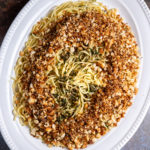

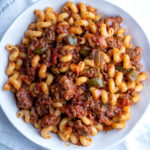







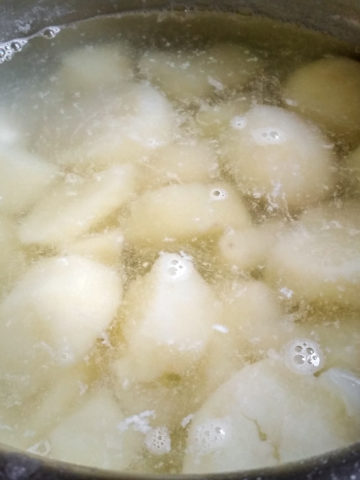
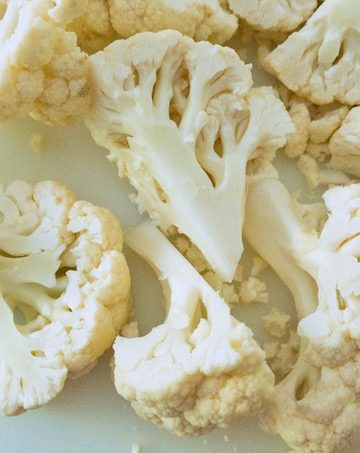

Did you make this recipe? Let me know!